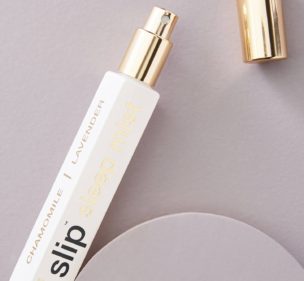Tips for Alleviating Cedar Fever

What is cedar fever?
Cedar fever is a seasonal allergy brought on by an allergic reaction to the pollen from mountain cedar trees. Cedar grows naturally and is one of the most allergenic pollens in the country.
What causes cedar fever?
Cedar fever is sparked by inhaling pollen from the Ashe juniper (Juniperus ashei). Technically it is not a cedar tree, although it is referred to as Mountain Cedar. It grows to a maximum height of approximately 30 feet on the limestone plateaus of Central Texas and Austin, and in smaller favorable areas of Texas, New Mexico, Northern Mexico, Arkansas, and Oklahoma.
When is it most prevalent?
The trees typically produce large quantities of pollen from January to February, but can last until March. However, the day-to-day weather can significantly affect the amount of pollen in the air. On cool, sunny, and windy days, the pollen is so profuse that it looks like smoke. It’s not unusual for the fire department to respond to false alarms in cedar-rich Austin, due to trees that are shaken or blown, which cause pollen to fall and produce a smoky appearance.
What are the symptoms?
Although cedar fever does not typically cause an actual fever, many people do experience sneezing, runny nose, sinus congestion, excess tearing and itchy eyes, also known as hay fever (allergic rhinitis). Others complain of itchy ears, or throat as well as fatigue, mild headache, and sore throat. If these symptoms persist, they can potentially lead to infections of the sinuses, and exasperate symptoms in eczema and/or asthma sufferers.
What are some of the most common treatment options for cedar fever?
There are several treatment choices for alleviation of cedar fever symptoms. Consult with your physician to determine which is best is recommended. Here are some of the most popular treatments :
- Nose Sprays- Flonase and Nasonex are two of the leading spray treatments for allergy symptoms. Zyrtec, Claritin, Allegra, Sudafed are their generic counterparts that many use as alternative. They are also known to provide temporary relief.
- Visit an allergist. For starters, here’s a list of allergist in Austin, TX. Allergists have expertise in allergy treatment. They are also able to identify the best course of treatment.
- Limit outdoor exposure.
- Essential oils serve as a natural and safe way to treat the symptoms of allergies and boost your immune systems. They have the ability to chemically support the body and help it to overcome hypersensitivity.
- Invest in a good HEPA filter for your central air system. Check out the benefits here.
- Vitamin D3 offers one of the best ways to stay healthy and curb allergy induced inflammation. Blood levels of 50 ng/ml of vitamin D3 are considered the “normal” range needed to prevent inflammation and your physician can easily perform the appropriate tests to identify your current levels. Mushrooms, eggs, wild salmon and other fatty fish contain vitamin D3. It might be hard to find specific sources, so might have to opt for supplements. If so, it’s strongly recommended that you select a high quality, natural based product.
- Wash your hands, face and clothing when you come in from the outside.
- Nasal Irrigation Devices such as neti pots, are an allergy treatment which are available for purchase at most grocery stores and pharmacies. They help you flush irritating allergens out of your nasal passages by using a saline solution. Research has shown that it works better than saline nasal sprays and can help reduce symptoms even as a stand-alone treatment, although it seems to work best in combination with other treatments.When using tap water to clean sinuses with neti pot, boiling the water first will kill the bacteria and avoid infection. It can provide near instant relief from sinus pressure.
- Probiotics – Studies indicate that probiotics, or “good bacteria,” may be helpful to people with seasonal allergies. They are found in yogurt, kombucha, kefir, kimchi, sauerkraunt, and supplements. Probiotics treat allergies by improving your digestive system, which decreases inflammation, and stabilizes your immune system.
- Keep your windows and doors closed, especially when it’s windy.
- Immunotherapy Herbalogic offers allergy drops are a liquid form of immunotherapy administered under the tongue rather than through a shot. Allergy shots are aimed at increasing your tolerance to allergens that trigger your symptoms when you are exposed to them.
- Antioxidants are important in an anti-inflammatory diet, especially for those with seasonal allergies, because of their immune system support and protection against free radicals. Getting more antioxidants into the diet is easy. The Reanimator from Level Up in Austin, TX is a quick way to get a boost of antioxidants. This special combo blends strawberry, blueberries, lemon, cucumbers, beet and spurulina, all of which are loaded with antioxidants.
Herbal Supplements-Herbal supplements can help reduce or eliminate symptoms associated with allergies and are a natural alternative to over-the-counter or prescription medications. The Herb Bar offers a wide assortment of herbal designed specifically for alleviating allergy symptoms.
Subscribe and watch our wellness channel on YPLS TV !
Have you tried any particular allergy treatments? Please share below in the comments.
Resources:


















